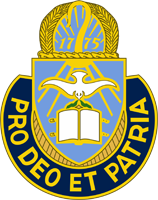Religious Affairs Specialist History
As early as 1866, the U.S. Army decided that a Soldier who is found competent to teach common school subjects should be detailed to do so under a local chaplain’s auspices, who often served as the schoolmaster. That meant the assistant cared for the chaplain’s official property, acted as his clerk, and helped with the educational, religious, and entertainment programs.
On 28 December 1909, the official Military Occupation Specialty (MOS) of Chaplain Assistant was established, as cited in General Order No. 253, War Department, Washington, D.C., paragraph 1, which read, “One enlisted man will be detailed on special duty, by the commanding officer of any organization to which a chaplain is assigned for duty, for the purpose of assisting the chaplain in the performance of his official duties.” Although a high moral character was required, there were no other prerequisites or generally recognized performance criteria.
In 1927 and again in 1933, the Chaplain Corps made overtures to the Secretary of War to provide a small corps of specialized enlisted assistants, which was unsuccessful. The job continued to have no vocational integrity until after World War II. The Korean War then led to the development of the Military Occupational Specialty (MOS) 71B.
After almost one hundred years of vague existence, there was a job for chaplain assistants. Training began at Fort Dix and Fort Ord with a four-week course. All trainees were volunteers who had successfully completed the nine weeks of basic combat training and nine weeks of Clerk Typist training from the Army’s Advanced Individual Training (AIT).
In August 1965, during a major revision of Army Regulation 611-201, chaplain assistants were designated as 71M, given a job description, and specific skill requirements. The next year, the Chaplain Assistant schools were merged into the U.S. Army Chaplain Center and School (USACHCS) at Fort Hamilton, New York. In 1972, the 71M was implemented into the Noncommissioned Officer Education System (NCOES) and was accorded the same degree of professionalism as other enlisted specialties. Since 1974, the Chaplain Assistant and the Chaplain role have come together to form the highly professional Unit Ministry Team (UMT) concept.
On 1 October 2001, the Chaplain Assistant MOS changed from 71M to 56M. Chaplain Assistants now serve in a “stand-alone” Career Management Field. They teamed up with chaplains around the world to provide religious support to Soldiers and families in support of Unified Land Operations.
On 20 March 2005, the Chief of Chaplains approved the naming convention of the 56M MOS from Chaplain Assistant to Religious Affairs Specialist. This change recognized the increase of a Religious Affairs Specialist’s capabilities operating in a complex and religiously influenced world. The official name change took place on 1 October 2017.



